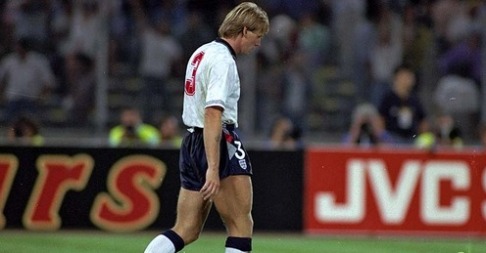After attending an NHS conference yesterday, I was cut-up on the way home. Not emotionally: that will come the next time my credit card bill arrives. But I was cut-up by another car, the driver of which thought that it was perfectly fine to merge from his lane into mine without indication, or apology. As a result, I was forced to brake hard and release a torrent of expletives that my mother must never hear.
I can’t remember the model of the car, but it was a hatchback. It was a colour that could generously be described as ‘lime green’ and it was being driven by someone with an unfortunate skin complexion and an even more unfortunate air of invincibility that belongs to all young male drivers. It had tinted windows, a sawn-off exhaust that made it sound emphysemic, thin tyres on brushed chrome alloys, an aerodynamic spoiler and a sound system that wouldn’t be out of place at Glastonbury.
I caught up with him at the next set of lights, and pulled up alongside him. My gut instinct was to repeat the expletives, perhaps adding a few more in for good measure. Or perhaps I should have taken the moral high ground and offered some sage advice on the perils of the road. I could have asked him how his mother would feel if she got a call saying he had been in an accident (relief possibly?).
In the end, I settled for a much more cutting ‘Does your mum know what you’ve done to her car?’
He clearly wasn’t expecting that, and as his bum-fluff lined chin dropped and his brain searched for a witty riposte (comes with age, sunshine), the lights changed. I smiled to myself, and turned left.
I like to think he sat there for a minute, ruminating on his life, before eventually being honked by the car behind him, which would lead him to offer an apologetic hand in his rear mirror before crawling off, forever changing gears smoothly and feeding the wheel, and always wondering what happened to the man that turned his life around that day. The reality is that he probably shrugged his shoulders, turned up ‘da tunes’ and went about harassing other motorists.
The point is this: whatever he did to his car, whatever colour he painted it, whatever Blaupunkt system he installed, however hard he revved the engine at lights and other motorists, it would still be the same car. Essentially, a hairdryer on wheels.
It got me thinking (and getting around to the point of this blog) about a key theme that came out of the Patient Safety Congress: that of culture. “We need to change the culture!”, “We must have a more open culture!”
I agree, entirely. The challenge is not in what but how. Saying “We need to change the culture” on its own is the equivalent of our mutual friend putting a set of shiny alloys or a fat exhaust pipe on his mum’s car. In the end, it will still be his mum’s car, fundamentally limited, however pimped up it is on the outside. If you really want to pimp a car (or the performance of a large public body), you’ve got to get the hood up and get into the engine, where the magic is. As John Travolta once put it “We’ll get some overhead lifters and four barrel quads…fuel injection cutoffs and chrome plated rods oh yeah…”
If you want to change the culture, I don’t think you do it by saying you are ‘changing the culture.’ Cultures don’t want to be changed. They are nebulous, ever shifting, and bloody stubborn. My own view is that the key to successful culture change is not to focus on culture change: to not look Medusa in the eye directly.
That’s because the culture of an organisation is the output from everything that you put in and if you want to change it, you have to do it without the culture noticing, or it will come at you and turn you to stone.
How? By doing the practical stuff. By developing an understanding of how to maximise the performance of staff (answer is not by demanding more for less); By designing ‘in’ safe working environments and tools that make it easy to do the right thing, and designing processes that make it hard to do the wrong thing; by striving to become a high reliability, listening and learning organisation (all human factors) by ensuring that decision making is devolved to those people who are best placed to make them. These are things that can be done, systematically, over time, and shared with others who are striving for the same goals.



